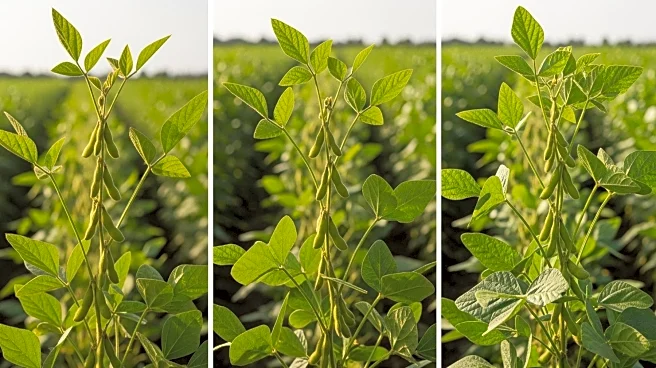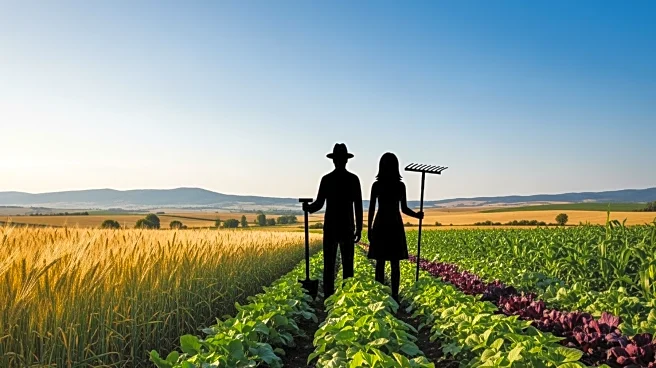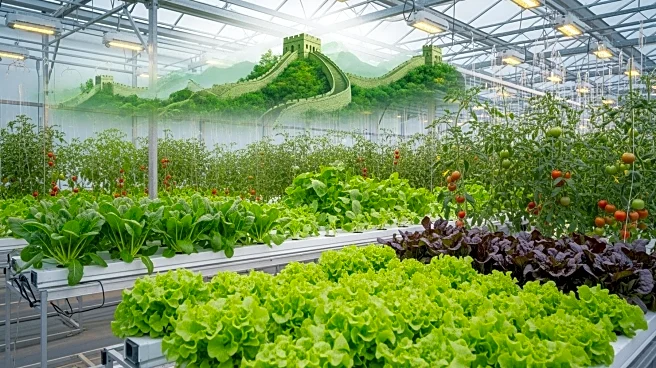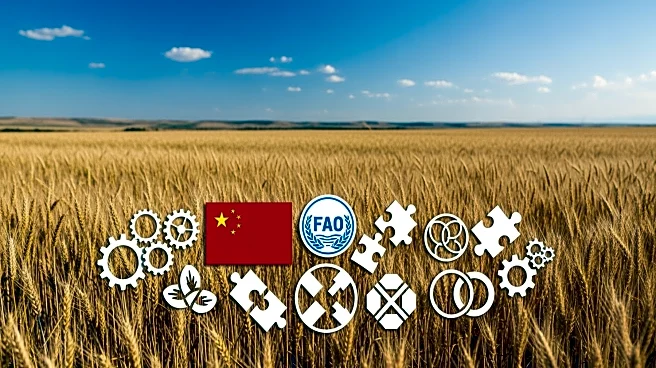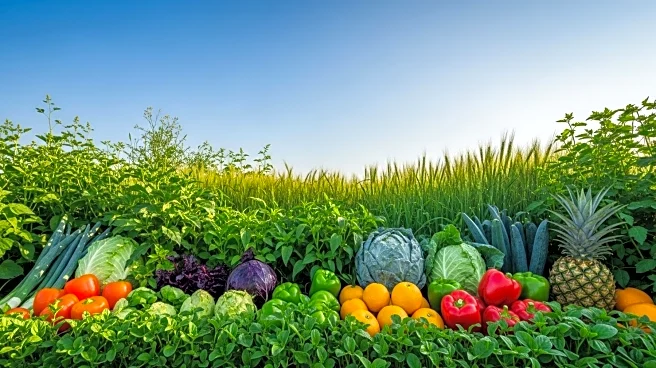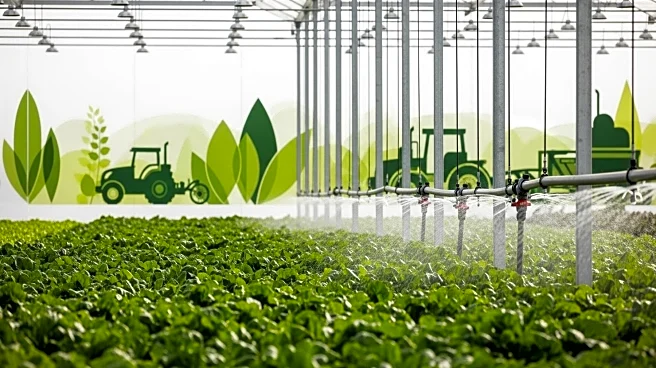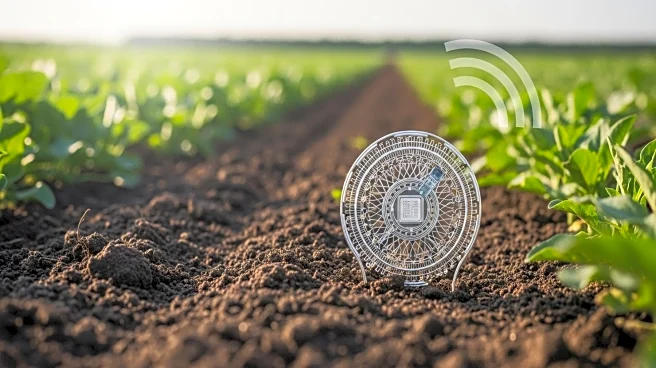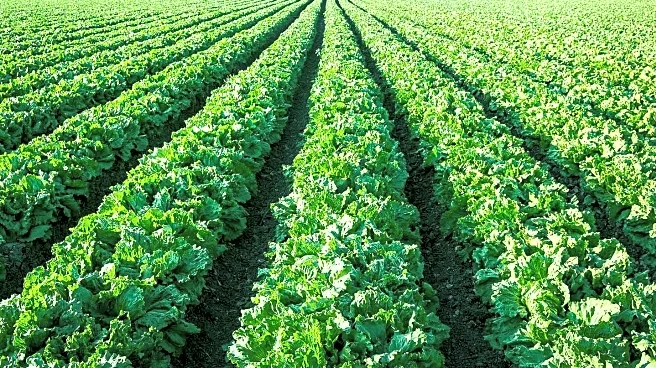What's Happening?
Recent research has provided new insights into the domestication process of soybeans, particularly focusing on the genomic variations of black soybeans. The study reveals that black soybeans possess distinct
genomic structures, differentiating them from other cultivated soybeans. This places the black clade as an intermediate form in the domestication process. The geographical distribution of two black soybean subgroups suggests the existence of at least two domestication centers in China. Through genome-wide scans, researchers identified hundreds of selective sweeps during the transitions from wild to black soybeans and from black soybeans to landraces, highlighting the progressive selection of domestication genes at different stages.
Why It's Important?
Understanding the domestication process of soybeans is crucial for agricultural development and food security. The identification of distinct genomic structures and domestication centers can lead to improved soybean varieties with enhanced traits such as yield, disease resistance, and adaptability to different environments. This research could benefit farmers and the agricultural industry by providing insights into breeding strategies that optimize soybean production. Additionally, the study contributes to the broader understanding of plant domestication, which is vital for sustaining global food supplies.
What's Next?
Future research may focus on further exploring the genetic diversity within soybean populations to identify traits that can be harnessed for crop improvement. There may also be efforts to apply these findings to other crops, enhancing the overall understanding of plant domestication. Agricultural stakeholders, including researchers and policymakers, might use this information to develop strategies that support sustainable agriculture and address challenges such as climate change and food scarcity.
Beyond the Headlines
The study of soybean domestication also raises questions about the ethical implications of genetic modification and the balance between traditional farming practices and modern agricultural technologies. As researchers continue to explore the genetic basis of domestication, there may be discussions about the impact of these advancements on biodiversity and the environment.
